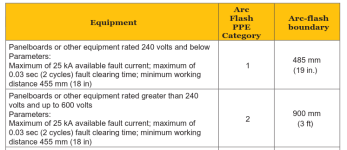Joethemechanic
Senior Member
- Location
- Hazleton Pa
- Occupation
- Electro-Mechanical Technician. Industrial machinery
The rural utility company I work around the most doesn't have any corner ground systems that I am aware of. They made an effort back in the 80's maybe into the 90's to eliminate all of them. Many irrigation services had such a supply. This was a cooperative and publicly owned utility (still is) and part of the benefits of such ownership was they would bring the service conductors out to the equipment served. With irrigation it often was maybe 1500 feet from the source. They didn't do it for free but were doing it for less than any contractor would charge to do the same thing. Little story to understand the situation here. The problem they created when they decided to get rid of corner ground delta was you needed a fourth conductor. Most those long runs I mentioned they buried a fourth individual conductor in the neighborhood of 10 to 20 feet away from the other three for most of the run. This not only creates more impedance during a fault condition but a problem I have run into in more recent years is when locate requests come in for other excavating this fourth grounded conductor doesn't get located and the excavator plows through it not knowing they hit it. I happened to find this when I was locating a underground problem with one of the ungrounded conductors one time more recently. In that process I discovered the grounded conductor was lost as well. End result was it was about 10-15 feet from the other conductors so I knew it was likely a system converted from corner ground delta, the break was right where a fiber line had been plowed in maybe 10 years earlier. My best guess they located the ungrounded conductors using simple 60 Hertz detection function of a locator and had no idea the grounded conductor was not in same vicinity so it was never marked. Makes me wonder how many other of those done like that had been compromised because of other excavation activity and failure to locate said grounded conductor.
If I was doing it the way I wanted and I was out in farm country I think I'd set a pole line and run two phase conductors and a MGN for the medium voltage out to the pump site. Do you think they don't do that because of balance problems. I'm not sure how large of pumps these are. Are we talking deep wells with big line shaft pumps that need to make a lot of head pressure?



